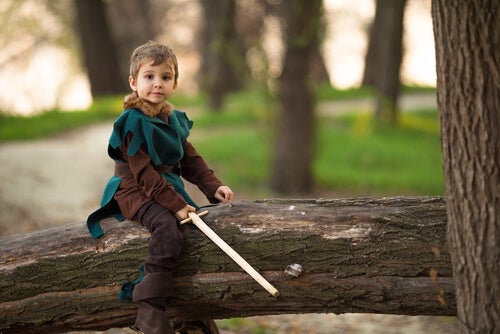Three Great Short Legends for Children

In this article, we share three short legends for children. They give us a wonderful opportunity to talk to our kids about the values which deserve to be at the center of their lives.
Legends are often a great source of knowledge which we can use to teach values to our children. Short legends for children can become wonderful tools to help them dream. When they read them, they can imagine themselves starring in their very own stories. We can use these legends to help them become better people: more responsible, autonomous, and understanding.
Throughout history, the tradition of the oral legend has been passed down from parents to children. Amazingly, the stories don’t even change too much in the process.
Of course, some have adapted them to modern times. Others have softened them somewhat, and a prime example of this is Disney in their film adaptations. Also, some have been changed completely.
However, all of them have kept most of their cultural elements and their educational purpose – which is to teach children values, ideals, and topics of interest.
The Best Short Legends for Children
We mustn’t confuse legends with myths or fables. In general, legends are stories extracted from a supposed ancestral reality rooted in history. However, at the same time, they’re often mixed with a good dose of fantasy, the supernatural, and a great imagination.
Fables usually have animal main characters. Their purpose is usually to offer some sort of “lesson”. Aesop’s Fables are a prime example of this.
In contrast, a legend can contain elements of fables or myths, with a touch of the supernatural added in. They tend to narrate real social events. However, over time, these truths distort, as generation after generation share them over the years.
The best way to explain them is to give you some examples. That’s why we’ll be bringing you three famous short legends that are great for children.

The Flying Dutchman
Within the world of short legends, the Flying Dutchman really stands out. It dates back to the seventeenth century and tells the story of Captain Hendrik Van der Decken. His ship was heading for India when it was hit by a storm. They managed to get through it, thanks to the determination of the sailor, who, according to the legend, dared to challenge the authority of God.
Because of this, God condemned him to wander aimlessly with his ship throughout the oceans of the world. Ever since then, whenever the ghost ship appears with its tormented souls, people understand it as a very bad omen.
Beyond its potential religious interpretations, this legend is used to help children respect authority. The idea here is that it’s good for them to be themselves with their own personality and convictions. However, at the same time, they should respect their parents, caregivers, teachers, tutors, colleagues, etc.
Krampus
Something that we often find in legends is a certain morbid and macabre feel. Some of them can be downright terrifying. This is certainly the case with Krampus, a popular European being which is half goat and half demon, with giant horns and a hairy body.
Krampus is a character who supposedly appears every Christmas to punish children who haven’t behaved well. His origin is prior to Christianity. We have to remember that, in the past, it was customary to teach children using threatening characters such as Krampus and the Bogeyman.
However, the legend of Krampus can be softened using characters such as Santa Claus, St. Nicholas, or the Three Wise Men. What all these characters have in common is that they reward children for their good behavior.
Robin Hood
Our final legend speaks of justice and equality. Undoubtedly, the medieval English character of Robin Hood is one of the most beautiful and interesting ones for children. Over the years, it has been adapted dozens of time for the cinema, as well as for books and comics.
Based on real-life characters and their adventures, such as Ghino di Tacco, Robin Hood was a prince among thieves. He was a nobleman who had fallen into disgrace, but who decided to carry out his own form of justice by robbing the rich to give to the poor. One of his favorite victims was King John, who appropriated the English throne in the absence of his brother, the beloved Richard the Lionheart.

Robin Hood became popular in the fifteenth century. However, the historical events were based around the thirteenth century. Be that as it may, it can be used as a good example of social justice, and the fight against the tyranny sometimes exercised by certain powerful sectors. It can teach us the importance of putting our own selfish interests aside to help those most in need.
Any of these short legends for children, when adapted to modern times, can be beautiful examples that we can use for educating, for debate, and, of course, for enjoyment.
This text is provided for informational purposes only and does not replace consultation with a professional. If in doubt, consult your specialist.








